In the IT Service Management (ITSM) landscape, organizations often compare solutions like Jira Service Management vs. Ivanti Neurons. These industry-leading service desk software offer powerful capabilities to streamline service desk operations and enhance overall efficiency.
In this blog post, we’ll conduct a thorough and insightful comparison between Jira Service Management and Ivanti Neurons, examining their key features, strengths, and areas of differentiation. The goal is to provide an in-depth ITSM tool comparison, enabling you to decide when selecting the ideal solution for your organization.
Moreover, if these options do not fully align with your unique requirements, we'll introduce you to InvGate Service Management. This alternative presents a compelling solution tailored to address your specific needs.
Join us to explore the features and functionalities of these help desk software solutions and discover which platform best suits your ITSM needs.
Table of contents
- TL;DR
- What is Jira Service Management?
- What is Ivanti Neurons?
- Considering InvGate Service Management as an ITSM solution alternative
TL;DR
- Users highlight Jira Service Management's sprint planning and task assignment capabilities, as well as its ticketing system and end-user portal. However, they dislike the migration process, its limitations in reporting, a steep learning curve, and the reliance on additional plugins.
- As for Ivanti Neurons, users highlight its ease of use and customization, automation capabilities, and customer service. However, they dislike the out-of-the-box features, complex backend, poor documentation, and limited integration.
- Lastly, InvGate Service Management is recognized for its flexibility and scalability, Low-Code/No-Code capabilities, and ease of use. In addition, it offers multiple automation features, native, third-party, and API integrations, short implementation times, and outstanding support.
We tried to be as thorough as possible, but if you don't have enough time to read it through and through, here's (another) TL;DR: InvGate Service Management can do everything we say here, and you can test it right away for free for 30 days.
Most looked-at features by buyers
During the evaluation of ITSM tools, buyers typically consider crucial capabilities that help them determine which solution best aligns with their specific requirements and business needs. These factors play a significant role in the decision-making process.
Let's explore some of these essential considerations.
- User experience and interface - Buyers consider the platform's user-friendliness as an intuitive interface that enhances user adoption and productivity. Mobile accessibility is another factor for organizations with remote or mobile workforces.
- Self-service and knowledge base - Buyers value self-service capabilities that empower customers or employees to find solutions to common issues independently. A comprehensive knowledge base system with easy search functionality, FAQs, and guides can enhance self-service options.
- Scalability and customization - Organizations with evolving needs prioritize solutions that can scale with their growth and accommodate customization. The ability to create custom fields, workflows, and extensions/plugins is essential to tailor the solution to unique business requirements.
- Ticketing and Incident Management - Buyers seek robust ticketing systems that facilitate the effective handling and tracking of customer issues or incidents. Key features include ticket creation, assignment, tracking, prioritization, SLA Management, and escalation workflows.
- ITIL compliance - Many organizations adhere to ITIL best practices for IT Service Management. Buyers may prioritize solutions that support ITIL processes, such as Incident Management, Problem Management, Change Management, and Asset Management.
- Streamlined IT service catalog - Organizations often require a service catalog that enables users to request specific IT services or resources. This feature streamlines service requests, provides visibility, and helps manage service delivery effectively.
- Automation and workflow efficiency - Buyers consider solutions that offer efficient automation and workflow capabilities, saving time and effort. Features like automation rules, SLA-driven workflows, approval processes, and other tools or systems integrations are sought after.
- Integration and collaboration - Integration with other tools and systems, such as CRM, Project Management, or communication platforms, is crucial for streamlining workflows and ensuring data consistency. Collaboration features like internal communication, commenting, and mentions can also enhance team productivity.
- Insightful reporting and analytics - Buyers highly value reporting and analytics capabilities to gain insights into service performance, team productivity, customer satisfaction, and SLA compliance. Customizable dashboards and pre-built reports are essential for effective decision-making.
- Pricing and support - Buyers evaluate the solution's cost-effectiveness, including licensing models, subscription plans, and additional costs for features or users. The availability of customer support, documentation, and training resources also play a significant role.
What is Jira Service Management?
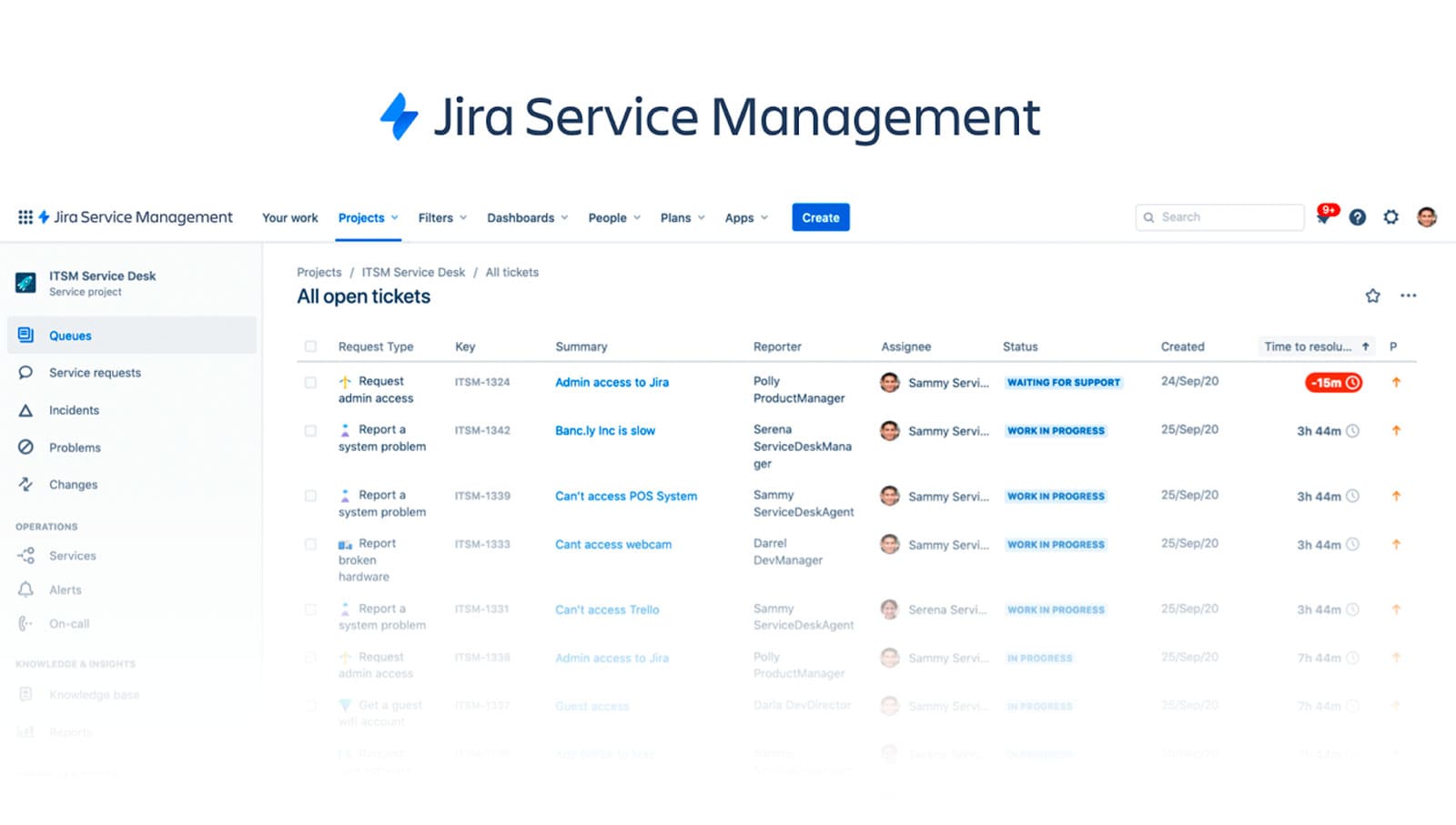
Jira Service Management, a standout product from Atlassian, is a dedicated platform tailored for IT Service Management. It provides organizations a highly efficient solution to streamline their service desk operations. With its robust features and user-friendly interface, Jira Service Management empowers businesses to optimize service delivery and enhance customer satisfaction. It currently offers a cloud-based option, allowing organizations to leverage the benefits of cloud computing for their Service Management needs.
Atlassian, the company behind Jira, was founded in 2002 by Mike Cannon-Brookes and Scott Farquhar in Sydney, Australia. Since then, it has experienced remarkable growth and expanded its global presence with offices in several countries, including the United States, Netherlands, Japan, and the Philippines.
Atlassian specializes in developing software and tools designed specifically for developers and project managers. Their extensive product portfolio comprises popular offerings such as Confluence, Bitbucket, and Trello, which have gained widespread recognition throughout the industry. These versatile tools cater to various needs, ranging from project management and issue tracking to content collaboration, code management, and team facilitation.
What users like from Jira Service Management
Jira Service Management has garnered customer acclaim, as evidenced by analysis from reputable sources such as Gartner and G2. Here are some of the key benefits that have been emphasized.
- Intuitive and user-friendly interface - Users highly value the platform’s intuitive interface, which enhances incidents and requests management. Its design promotes ease of use and enables teams to navigate and interact with the system effortlessly.
- Simplified sprint planning and task assignment - Jira Service Management offers seamless integration with popular collaboration platforms like Slack and Teams, streamlining the process of planning sprints and assigning tasks. The Kanban view provides a centralized hub for managing tasks, while the tagging function enables the efficient organization of project-specific tasks.
- Comprehensive task details and robust filtering capabilities - Users appreciate Jira Service Management's comprehensive task details, which provide in-depth information about each task. This feature gives teams a holistic understanding of the work at hand.
- Additionally, the platform offers powerful filtering capabilities, empowering users to search, sort, and organize tasks based on specific criteria, improving productivity.
- Efficient ticketing system with customizable workflows - Its ticketing system, complemented by customizable workflows, simplifies task management, allowing teams to track and prioritize tickets according to their unique requirements effectively.
- Flexible pricing options to suit different needs - Jira Service Management offers a range of flexible pricing options, accommodating organizations of various sizes and budgets. It includes a free plan suitable for small teams of up to three users with 2 GB of storage. The cloud-hosted option provides a reasonably priced base package.
- Enhanced user portal for self-service and feedback - The platform includes an improved user portal that enhances the self-service experience for users. The portal facilitates self-assessment of incidents and requests, empowering users to resolve issues whenever possible independently. Furthermore, users can rate the overall process upon issue resolution, providing valuable feedback that aids in continuous improvement and customer satisfaction efforts.
What users don’t like from Jira Service Management
While Jira Service Management has many strengths and positive attributes, it is not immune to customer concerns and dislikes. Analysis of sources such as Gartner and G2 has revealed recurring criticisms from users.
- Limited and complex integrations - Users have reported a need for more readily available integrations and have had to develop custom solutions to connect Jira Service Management with specific tools. Integrating the platform with external systems can be challenging and time-consuming.
- Steep learning curve - The platform's robust capabilities and extensive functionalities can result in a steep learning curve for users. Some individuals may require additional guidance or training to effectively navigate and leverage the system and its features.
- Challenging migration process - Users have expressed concerns about the complexity of transitioning to Jira Service Management's projects. Some users have encountered difficulties that may necessitate a separate user subscription, making the migration process cumbersome.
- Less intuitive interface - Compared to alternative options, some users find Jira Service Management's interface less intuitive, particularly regarding external customers interacting with the platform.
- Reliance on additional plugins - Users have expressed the need to rely on additional plugins to access basic features within the system. Furthermore, compliance with data protection regulations such as GDPR (General Data Protection Regulation) has been challenging for some users.
- Issues with Atlassian support - Users have reported challenges when seeking assistance from Atlassian support. They have experienced difficulties in obtaining the necessary support and guidance, which may impact their overall experience.
- Limitations in task tracking and reporting - Users have encountered challenges when tracking multiple tasks, generating comprehensive reports, and creating customized dashboards within the platform. These limitations may hinder users' ability to monitor and effectively analyze project progress and performance.
What’s Jira Service Management’s argument over Ivanti Neurons?
In the comparison between Jira Service Management and Ivanti Neurons, Jira Service Management presents several arguments highlighting its strengths and differentiating itself from Ivanti Neurons. Here are some key points to consider.
- Extensive integration options - Jira Service Management has a wide range of integrations with popular collaboration platforms like Slack and Teams. This allows seamless connectivity and streamlined workflows, enhancing team collaboration and productivity. In contrast, users of Ivanti Neurons have expressed frustrations over the limited integration capabilities and the need for custom solutions to connect with specific tools.
- User-friendly interface - Jira Service Management is known for its intuitive and user-friendly interface, which simplifies incidents and requests management. The platform's design promotes ease of use and enables teams to navigate and interact with the system effortlessly. On the other hand, some users have found Ivanti Neurons' user interface to be outdated, impacting the overall user experience.
- Customizable workflows - Jira Service Management offers customizable workflows, allowing teams to adapt task management processes according to their unique requirements. This flexibility enables effective tracking, prioritization, and customization of tickets. In contrast, some users have expressed concerns about the complexity of the backend in Ivanti Neurons, with options dispersed across different areas, making navigation challenging.
- Pricing options - Jira Service Management provides flexible pricing options, including a free plan suitable for small teams and reasonably priced cloud-hosted packages. This range of choices accommodates organizations of various sizes and budgets. In comparison, Ivanti Neurons users have noted that the solution offers cost savings compared to alternative products they have tested, but specific pricing details may vary.
What is Ivanti Neurons?
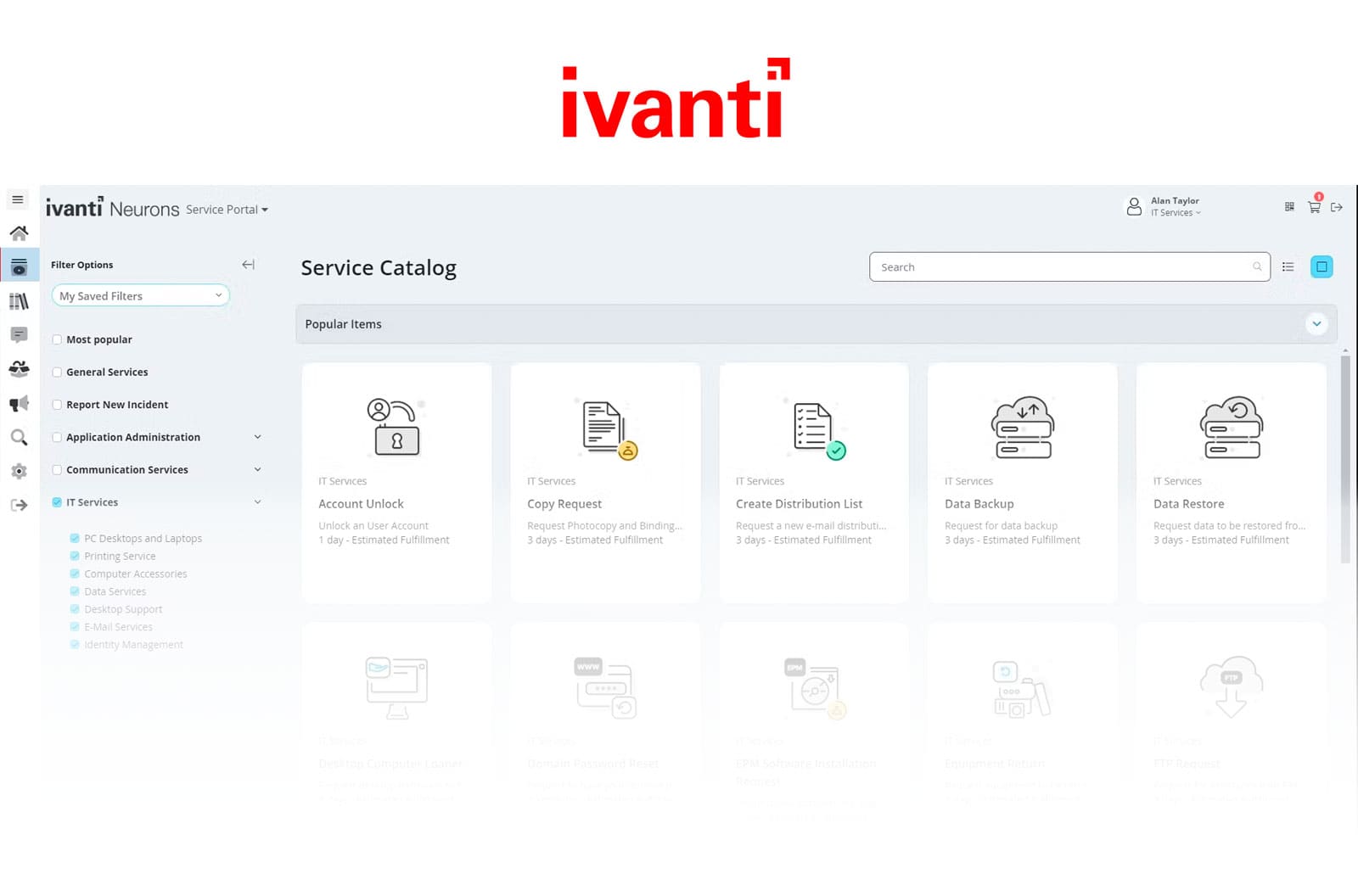
Ivanti Neurons for ITSM, developed by Ivanti, is a comprehensive Service Management solution for enterprise-level organizations. It offers flexible deployment options, including both cloud and on-premise, catering to diverse infrastructure preferences. This powerful platform covers the entire service delivery lifecycle, from capturing requests to resolving issues. Built on industry standards, Ivanti Neurons for ITSM incorporates 11 ITIL 4-certified practices, ensuring a solid foundation to effectively meet the Service Management needs of organizations.
The main objective of Ivanti Neurons for ITSM, which is part of the broader Ivanti Neurons platform, is to streamline operations by automating manual processes. Organizations can achieve improved efficiency, enhanced compliance, and strengthened security measures by replacing manual workflows with efficient automated ones.
Ivanti, the technology company behind Ivanti Neurons, specializes in managing and securing Everywhere Work environments. With a strong emphasis on improving the digital employee experience (DEX), Ivanti aims to create seamless and productive digital workspaces. Headquartered in South Jordan, Utah, Ivanti has established itself as a trusted provider since its inception in 1985. The company takes pride in its dedicated workforce, consisting of professionals ranging from 2,500 to 4,999, committed to delivering innovative solutions and exceptional customer service.
What users like from Ivanti Neurons
Analyses from sources such as Gartner have demonstrated the positive reception of Ivanti Neurons for ITSM by users in various industries, including IT Services, Healthcare and Biotech, and Finance. Let's take a closer look at some of the benefits highlighted by these users.
- Enhanced flexibility - The system empowers users to create customized group function modules and adjust workflows to match their requirements. This flexibility allows organizations to align the platform with their existing processes and adapt it as their needs evolve.
- Customizability - Users highly value the extensive customization options Ivanti provides, allowing them to tailor the system to their specific needs. This flexibility ensures that the solution aligns perfectly with their unique requirements.
- User-friendly interface - The system is widely praised for its intuitive and user-friendly nature, particularly regarding ticketing, equipment access, and call stacks. This user-centric design simplifies navigation and task execution, enabling users to interact with the system effortlessly.
- Automation capabilities - Users highly appreciate the automation opportunities Ivanti Neurons offers. The platform enables the automation of manual tasks and repetitive processes, leading to streamlined operations, increased productivity, and improved overall efficiency.
- Exceptional customer service - Ivanti's customer service consistently receives commendation for its collaborative approach and deep understanding of customer needs. The dedicated support team goes the extra mile to ensure that users receive prompt assistance and practical solutions to any challenges.
- Cost-effectiveness - Some users have observed that Ivanti Neurons for ITSM delivers cost savings when compared to alternative products they have previously tested.
What users don’t like from Ivanti Neurons
Users value Ivanti's robust capabilities and its transformative impact on their IT service environments. However, there are areas where improvements could be made, particularly in user interface and system complexity. Reviews from reputable sources such as Gartner shed light on some of the criticisms raised by users. Let's look at some specific areas of concern that have been identified.
- Complexity in the backend - Some users have found the system's backend difficult, with options dispersed across different areas, resulting in a challenging navigation experience. This complexity may require users to invest extra time and effort in familiarizing themselves with the system's structure and organization.
- Limited integration capabilities - Some users have expressed frustration over the limited integration options available with other tools. This limitation can hinder process improvements and the seamless integration of Ivanti with other existing systems or preferred third-party solutions.
- Limited out-of-the-box features - Some users have expressed that Ivanti lacks certain features that they would expect from a solution of its sophistication level. This limitation may require additional customization or workarounds to meet specific requirements.
- Insufficient documentation - Users have raised concerns about the outdated and inadequate documentation provided by Ivanti. This issue necessitates additional hands-on training and troubleshooting, as users may struggle to find relevant information or step-by-step guides for specific tasks.
- Support challenges - Certain users have encountered difficulties with Ivanti's support function, including getting assigned to the appropriate support agent and resolving issues promptly. Users have also expressed frustration with identifying the root cause of problems, potentially impacting their overall experience with the system.
- Outdated user interface - Some users have mentioned that the product's user interface has an outdated appearance, which may impact the overall user experience. This feedback suggests that there is room for improvement in modernizing the visual design and enhancing the user interface aesthetics.
What’s Ivanti Neurons’ argument over Jira Service Management?
In the comparison between Jira Service Management vs. Ivanti Neurons, the latter presents its own arguments to emphasize its strengths and differentiate itself from Jira Service Management. Here are some key points to consider.
- Enhanced flexibility and customizability - Ivanti Neurons offers enhanced flexibility, empowering users to create customized group function modules and adjust workflows according to their specific requirements. This level of customizability allows organizations to align the platform with their existing processes and adapt it as their needs evolve. While Jira Service Management offers customizable workflows, the extent of customization options and flexibility Ivanti Neurons provides may be more robust.
- Automation capabilities - Users highly appreciate the automation opportunities offered by Ivanti Neurons. The platform enables the automation of manual tasks and repetitive processes, resulting in streamlined operations, increased productivity, and improved overall efficiency.
- Exceptional customer service - Ivanti's customer service receives consistent praise for its collaborative approach and deep understanding of customer needs. The dedicated support team goes the extra mile to ensure that users receive prompt assistance and practical solutions to any challenges they may encounter. In comparison, some users of Jira Service Management have reported challenges when seeking assistance from Atlassian support, impacting their overall experience with the platform.
- Cost-effectiveness - Some users have observed that Ivanti Neurons delivers cost savings when compared to alternative products they have previously tested. While Jira Service Management offers flexible pricing options, including a free plan and reasonably priced cloud-hosted packages, the cost-effectiveness of Ivanti Neurons is highlighted as a benefit by its users.
- Extensive customization options - Users highly value the extensive customization options provided by Ivanti Neurons, allowing them to tailor the system to their specific needs. This level of customization ensures that the solution aligns perfectly with their unique requirements. While Jira Service Management offers customizable workflows, Ivanti Neurons may offer more customization options.
Considering InvGate Service Management as an ITSM solution alternative

While Jira Service Management and Ivanti Neurons are acknowledged competitors in the ITSM industry, it is essential to consider exploring alternative solutions that align more closely with your organization's specific needs. In this regard, InvGate Service Management emerges as a compelling option that merits careful consideration.
Let's delve into the beneficial features of InvGate Service Management that make it a valuable choice for your organization's ITSM requirements.
1. ITIL-ready
InvGate Service Management has earned the prestigious ITIL4 certification from PINK Elephant, demonstrating its commitment to excellence in ITSM. Whether organizations are embarking on the ITIL journey or managing complex operations, InvGate Service Management provides a user-friendly and feature-rich experience, aligning with industry best practices.
2. Exceptional user-friendliness
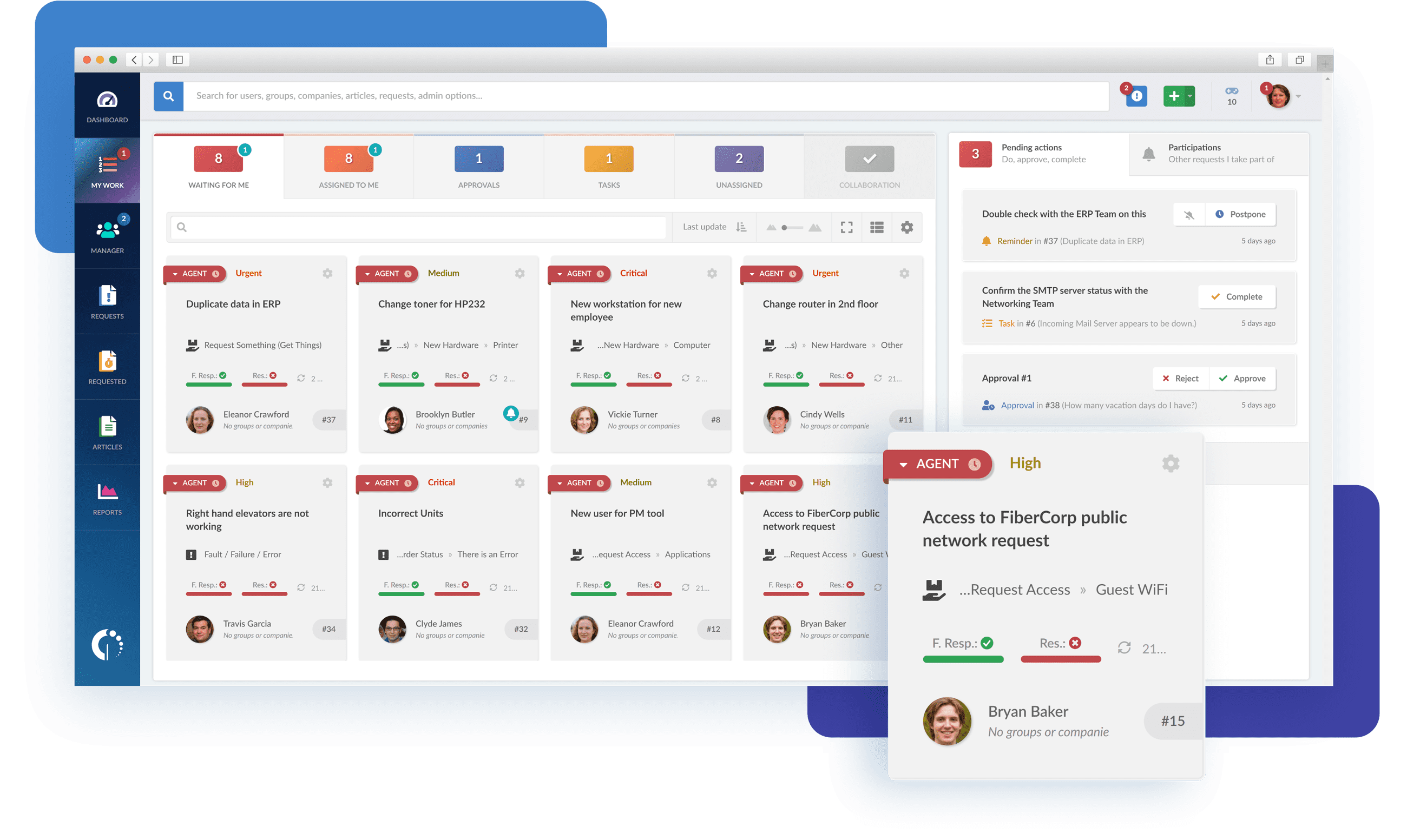
InvGate Service Management prioritizes an exceptional user experience with its meticulous design and its focus on UI/UX best practices. Its intuitive interface promotes rapid adoption and minimizes the need for extensive training. The platform reduces learning curves and maximizes productivity by providing a user-friendly design.
3. Easy configuration and setup
InvGate Service Management offers a simplified configuration and setup process, leveraging a no-code/low-code approach. This concept enables new and experienced users to implement the system without extensive technical expertise quickly. The platform ensures a swift setup process by providing straightforward configuration options, allowing organizations to leverage its powerful ITSM capabilities promptly.
4. Quick implementation, continuous innovation
InvGate Service Management ensures a fast return on investment through efficient implementation processes. Within weeks, organizations can start experiencing the benefits of this powerful ITSM solution. Additionally, regular feature updates keep users at the forefront of technology without incurring extra costs.
5. Comprehensive Asset Management
By combining InvGate Service Management with InvGate Asset Management, organizations gain a holistic view of their IT ecosystem, leading to enhanced service delivery and minimized downtime. InvGate Asset Management offers features like IT Asset Discovery, Inventory Management, Software License Management, and maintenance schedules.
6. Powerful Ticketing and Incident Management
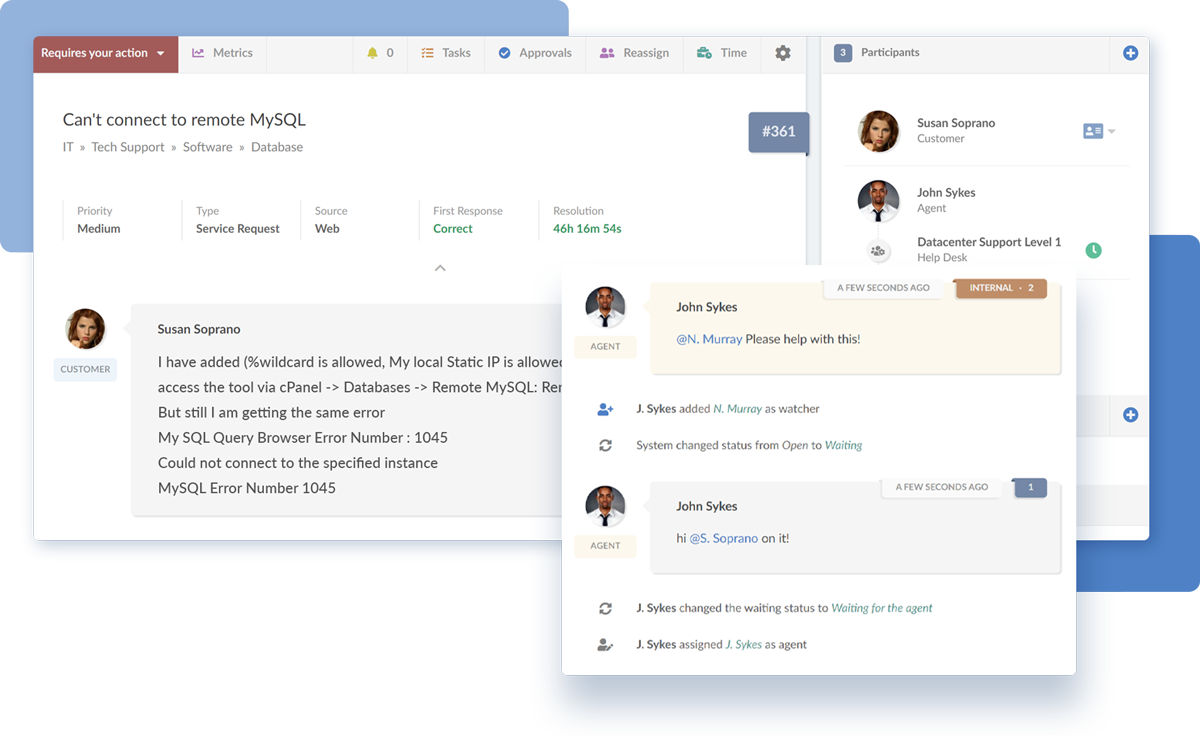
InvGate Service Management excels in its powerful features for Ticketing and Incident Management. It enables efficient tracking, collaboration, and resolution of tickets, empowering IT teams to handle and prioritize incidents effectively. With automated routing, customizable workflows, and SLA management, InvGate Service Management enhances the efficiency of incident resolution processes.
7. Comprehensive reporting and analytics
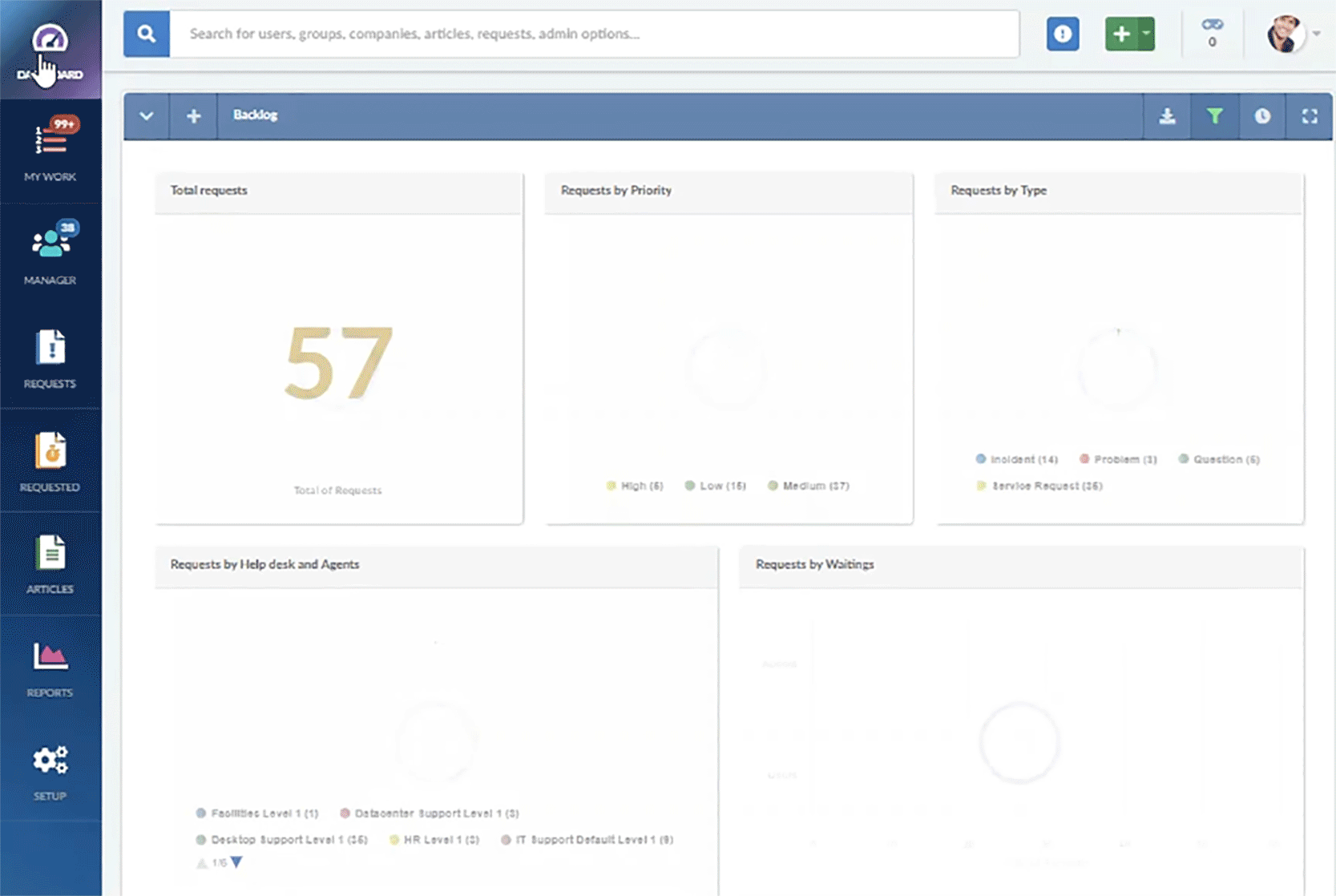
InvGate Service Management delivers extensive reporting and analytics functionalities, enabling organizations to gain valuable insights into their IT operations and performance. The platform offers ready-to-use reports and customizable dashboards, empowering IT teams to analyze data, identify patterns, and make informed decisions to enhance their services.
8. Customization and flexibility
InvGate Service Management offers flexible deployment options, allowing organizations to choose between on-premise or cloud-based solutions. This adaptability ensures that the platform can align with the specific requirements of different sectors and industries.
9. Self-service capabilities
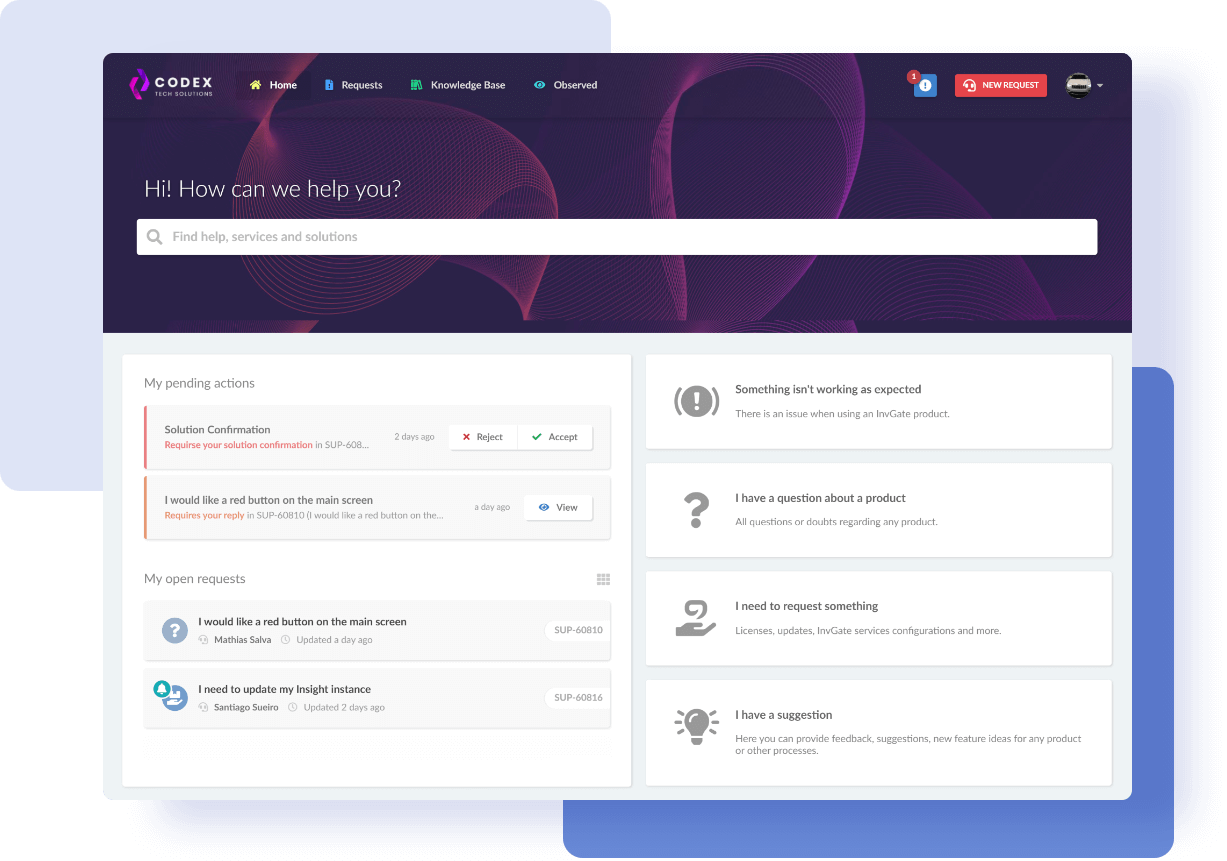
InvGate Service Management includes robust self-service functionalities such as a user-friendly portal, an extensive IT service catalog, and a knowledge base. These capabilities empower end-users to independently resolve common issues, access a wide range of IT services, and utilize self-help resources, reducing the burden on IT staff.
10. Cost-effective solution
InvGate Service Management provides a cost-effective solution that doesn't compromise on functionality. It offers a comprehensive range of ITSM features at a competitive price point, making it an attractive choice for organizations seeking affordability without sacrificing capabilities. Compared to alternatives like Jira Service Management and Ivanti Neurons, InvGate Service Management balances cost and functionality.
11. Born for ITSM, perfect for ESM
InvGate Service Management is designed explicitly for ITSM while seamlessly extending its capabilities to Enterprise Service Management (ESM). It empowers operational departments to improve their processes and fully embrace the benefits of digital transformation. With a primary focus on ITSM and strong performance in ESM, InvGate Service Management facilitates streamlined workflows and comprehensive digital transformation initiatives across all departments.
Next steps
Selecting the appropriate ITSM solution is a crucial choice that holds the potential to significantly influence your organization's IT service delivery and overall effectiveness. By thoroughly evaluating available options, you can ensure the adoption of a solution that aligns with your specific requirements and objectives.
Explore our live demo to gain firsthand experience of how InvGate Service Management can improve your business operations. Furthermore, we offer a complimentary ITSM implementation checklist that you can download. This valuable resource will assist you in effectively planning your next steps, ensuring a smooth and successful implementation process for your chosen ITSM solution.
















